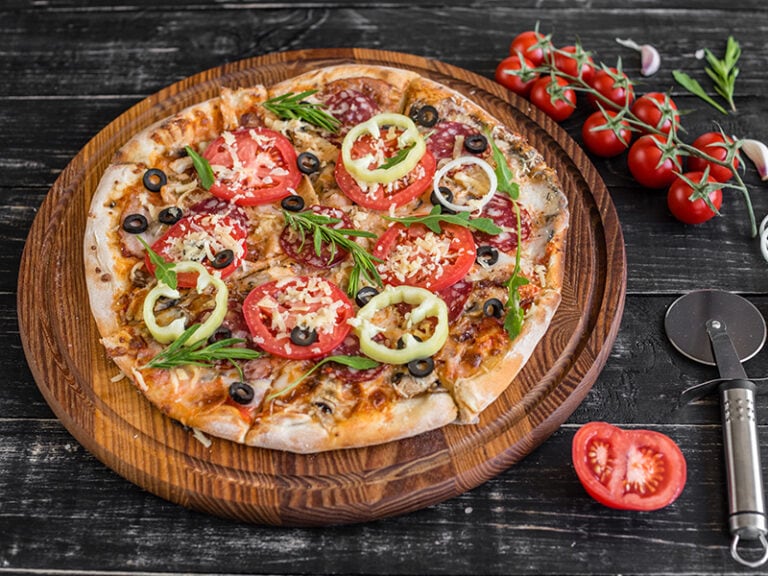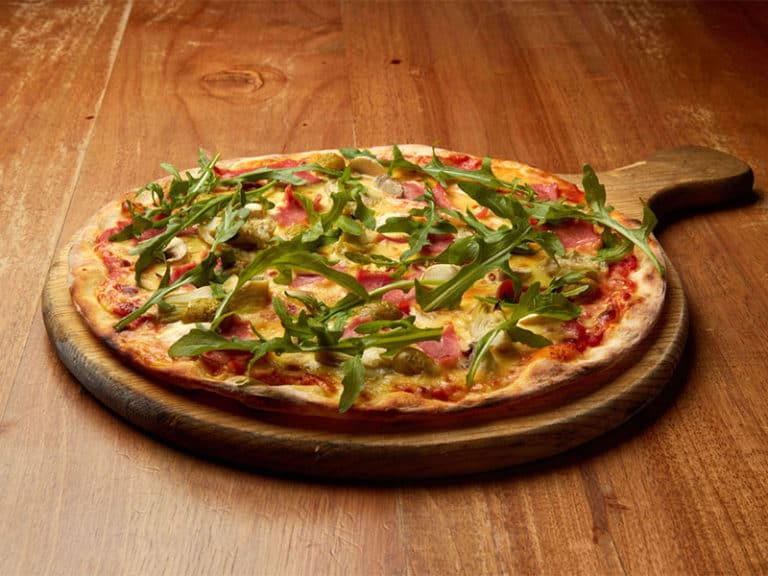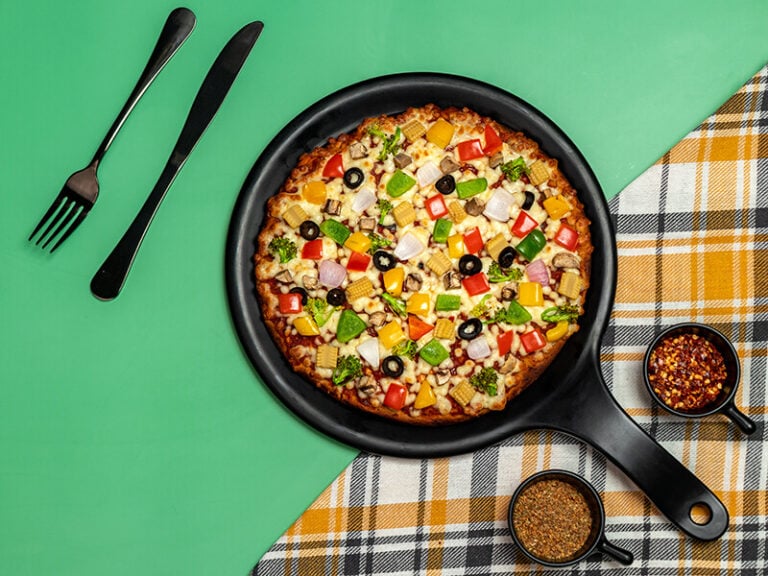What is a pizza stone and how to use it? When you try to make pizza for the first time, these questions will cause you many difficulties. If you want to bake a delicious pizza, you should have a few appliances, such as a pizza stone.
Some people claim that you can’t bake pizza without a pizza stone. But is it true? Do you need a pizza stone to cook pizza? In this article, I will explain why you need a pizza stone, how to make pizza with it, and how to maintain it properly.
What Do You Need To Know About Pizza Stone?
If you are new to baking pizza, a pizza stone can be challenging to work with. To get up to speed, you will need to do a bit of research. To make it easier for you, here’s some essential information about pizza stones.
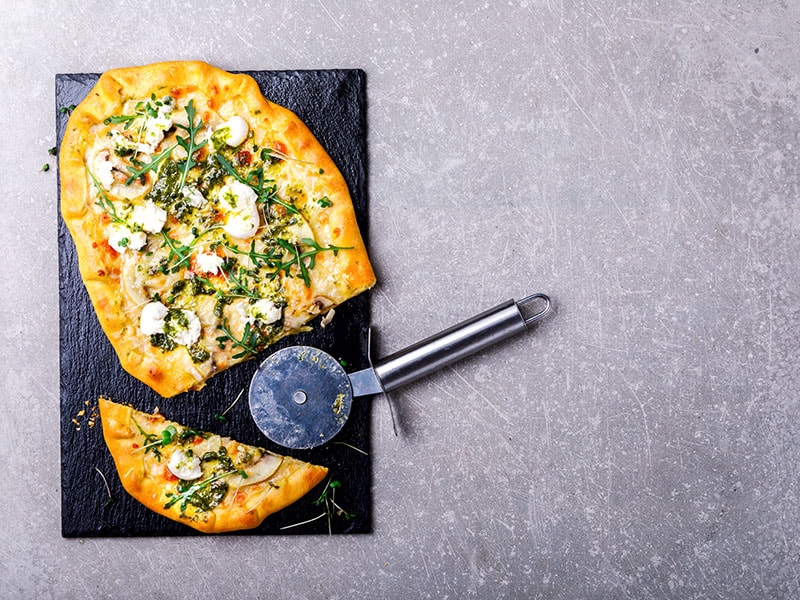
What Is A Pizza Stone?
Because of the name, some people believe that a pizza stone is made of stone, but it isn’t the case. This thing can be made of clay, ceramic, or actual stone. It is typically flat and heavy.
Pizza stones are also sometimes referred to as baking stones. Their shape can be round or rectangular. You can use a pizza stone for baking not only pizza but also any yeast bread.
Why Should You Use A Pizza Stone?
Professional pizza ovens do not require a pizza stone because these ovens provide the ideal temperature for baking pizza. However, home ovens can’t do that. A typical oven’s heat is usually insufficient to bake some pizzas, such as the New York or Neapolitan varieties.
Therefore, the crust is often not crispy enough, even though the dough is perfect. The pizza stone was created to address this issue.
That’s where pizza stones shine. They can absorb and retain heat for an extended period, creating optimum conditions for baking pizza, so your pizza can have a nice crispy texture.
Because of its porous material, a pizza stone can quicken the evaporating process of the pizza, allowing the moisture in the pizza to escape faster (1). The tool also reduces the baking time and makes it easier to create restaurant-grade pizzas.
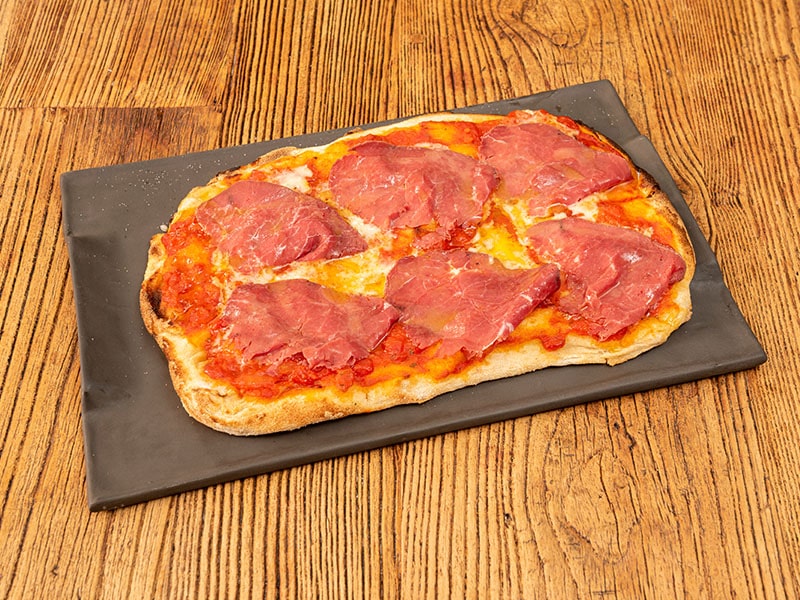
How To Use A Pizza Stone
The best way to get the most from the pizza stone is to understand how to use it properly. You can look at these step-by-step instructions below to have an overview of working with a pizza stone.

Step 1: Start With A Cold Oven
As I mentioned earlier, a thermal shock can shatter or break a pizza stone, so never put a cold stone into a hot oven. You should also avoid putting a frozen pizza on a hot pizza stone, which will lead to the same result.
Put the pizza stone into the cold oven. You can place it on the center rack if you want to bake pizza or cookies. For other types of baked goods, such as biscuits and bread, you should choose the middle rack.
After that, you should preheat the oven, along with the pizza stone in it. This should take about 1 hour, meaning the stone is ready to use about 30 minutes after the oven is properly reheated.
Step 2: Put The Pizza Into The Oven
Use a pizza peel to transfer the pizza dough into the oven. If you don’t have a pizza peel, you can use parchment paper or a cutting board instead. But I recommend you have a pizza peel: it will reduce the chances of getting burnt.
You can add a little cornmeal or flour to help remove the pizza easier. Gently place the pizza on the pizza stone. If you are careful enough, the pizza will not slip out of the stone.
Step 3: Remove The Pizza From The Oven
After the baking process is done, take out your pizza with a pizza peel. Don’t remove the pizza stone immediately. Let it cool down in the oven.
You can take a look at this instruction to have a better grasp of how to work with pizza stones.
How To Use A Pizza Stone For A Frozen Pizza
A pizza stone is among the best tools to revive a frozen pizza to its former deliciousness. The preparation is more simple than you can imagine!
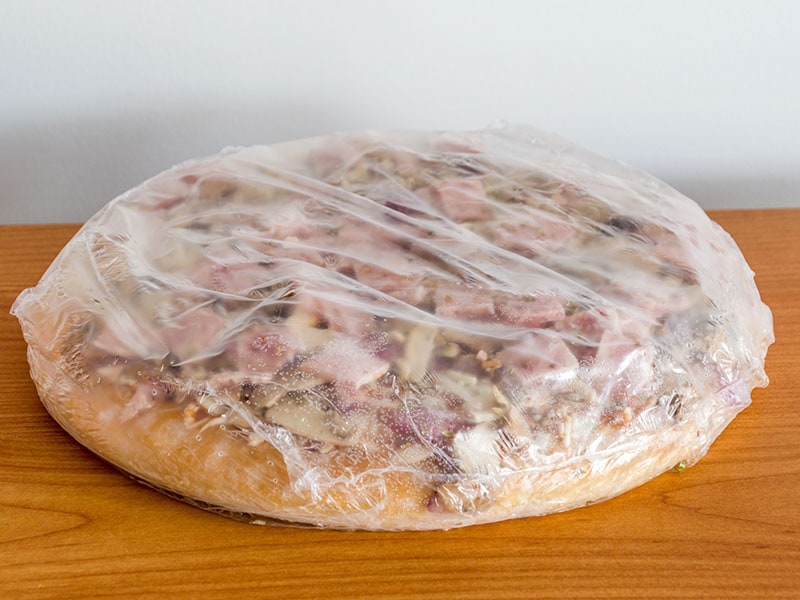
Step 1: Warm The Pizza Up
Let the frozen pizza thaw for 2 to 3 hours before putting it in the oven to prevent thermal shocks that could cause the pizza stone to crack or break. You can use a microwave to quickly defrost a frozen pizza in 6 to 10 minutes.
Step 2: Make Holes
Making holes in the pizza dough can help create a crispy crust and prevent a soggy texture. This can be done by laying the frozen pizza on a work surface, face down, and cutting off the plastic wrap. Use a toothpick or a knife to make holes in the crust for ventilation.
Step 3: Preheat The Oven And The Pizza Stone
Preheat the pizza stone before putting the thawed pizza in it. Choose the ridged side because doing so can reduce the risk of thermal shock. Also, I advise preheating the oven to 350°F, though lower temperature ranges can still do the trick.
Step 4: Bake The Pizza
Cooking a pizza typically takes 10 minutes, but this can vary depending on the toppings and temperatures. Keep an eye on the pizza and remove it once it has achieved a golden-brown look.
Be careful when removing the stone from the oven, as it can be hot enough to burn your skin. Use a pizza peel to safely remove a pizza from a pizza stone before slicing it.
There are many great tips for reheating frozen pizzas, one of which is to use a good pizza stone!
How To Use Your Pizza Stone On A Grill
Making grilled pizza on a pizza stone is the optimal way to cook your pizza at home. To do it the right way, you can take a look at the following instructions.
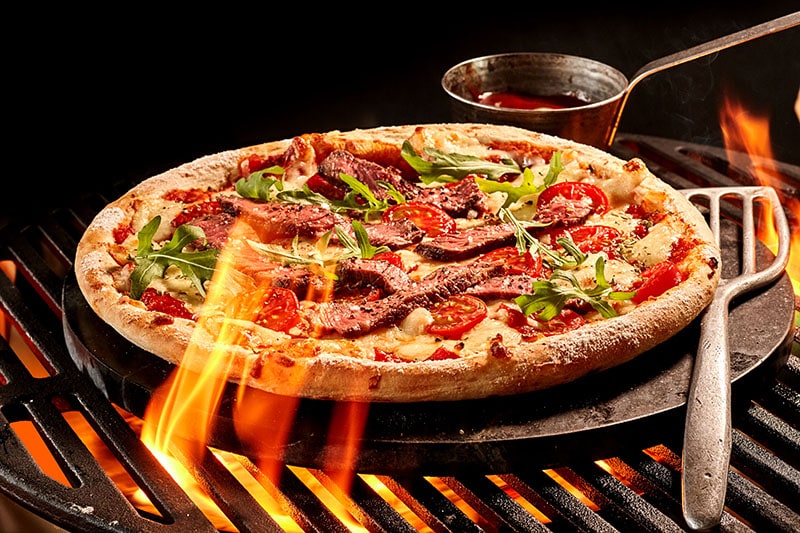
Step 1: Prepare Your Grill
Before using your grill, ensure it is at room temperature to prevent the pizza stone from breaking. For charcoal grills, place the stone on the grill before lighting the coals so it can reach the desired temperature.
You may use a metal pizza peel and sprinkle a generous amount of cornmeal on it to keep the dough from sticking.
Step 2: Layer Your Pizza
Adding the sauce and toppings, don’t overtop your pizza since it may make your pizza soggy and sticky.
Step 3: Cook The Pizza
Open your grill hood and spread a layer of cornmeal on the stone. Transfer your uncooked pizza onto the stone, keep the pizza peel at a 45° angle and point it towards the far side. Gently pull the peel towards you to place the pizza.
Allow your pizza to cook by closing the grill hood, which should take approximately 5 to 10 minutes, depending on the pizza’s thickness and the number of toppings. For easier removal, sprinkle some cornmeal on the stone and a pizza peel.
Pro Tips For Using Pizza Stone
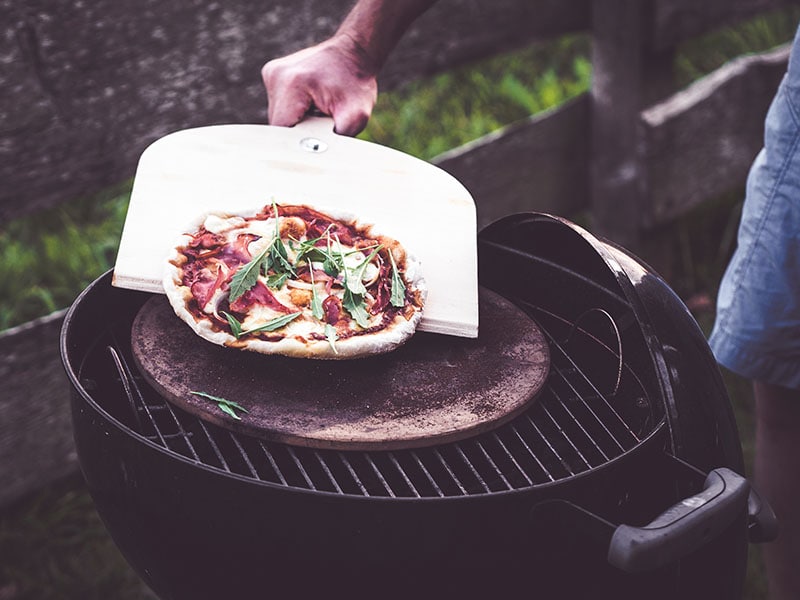
As you want to bake perfect pizzas, you have to make sure that everything is perfect. However, things sometimes go in unexpected ways. To avoid unnecessary problems when making pizza, you can learn more about these useful tips.
- You should put the pizza stone on the middle tray of the oven rather than the top or bottom when baking pizza. This ensures that both sides of the stone heat equally.
- Before putting your pizza stone in the oven, always season it first. It will be simpler to remove the pizza if you add a little oil or flour to the pizza stone.
- You may often inspect the food baked in the oven using a pizza stone. That way, you can manage the temperature and limit the chances of your food burning without knowing it.
- When you don’t have a pizza stone at home, you can use a cast iron pan as a substitute.
You don’t have pizza steel to transfer the pizza? You need to save this tip down right now!
How To Clean And Maintain A Pizza Stone
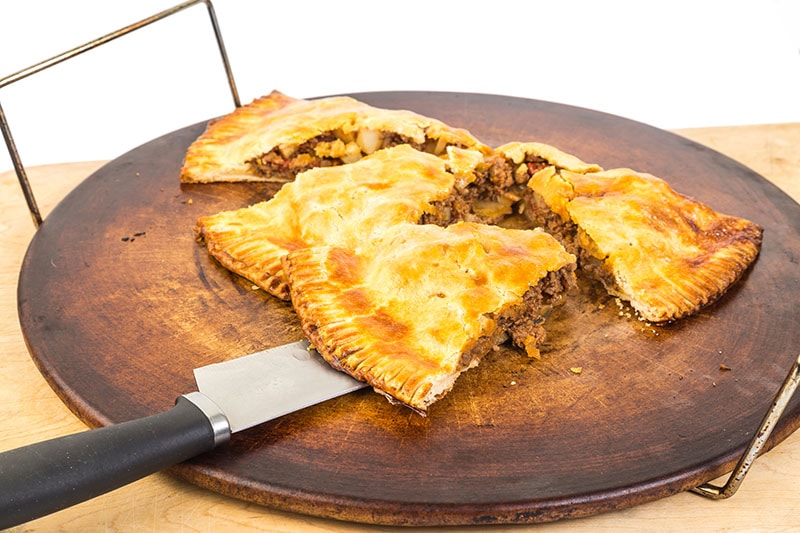
Following the manufacturer’s instructions is the best method to maintain pizza stones. Regardless of the type of pizza stone, you should keep it in a dry, stable spot, ideally at room temperature.
Extreme temperature changes can break many objects (2), and pizza stones are no exception. To minimize thermal stress, you can even keep the pizza stone in the oven all the time.
As the pizza stone absorbs heat, it keeps the oven from heating up too rapidly, which can overcook your pizza.
Try to avoid using any spices on the pizza stone. Due to its porous nature, your pizza stone will absorb it and retain an unpleasant odor. Because of the same reason, don’t wash it with any soap or chemical solution.
Instead, warm water and a teaspoon of baking soda are good enough to clean a pizza stone (when it is completely cool, of course). Always use a brush to clean up any food debris. To avoid mold or germs, wipe and dry the pizza stone after cleaning it.
After you learn these cleaning tips, you will become a pro at taking care of pizza stones.
Types Of Pizza Stones Every Home Cook Should Know About
Pizza stones are available in various colors, shapes, and sizes. To meet the demands of their clients, many brands make pizza stones from different materials, all of which have their own advantages.
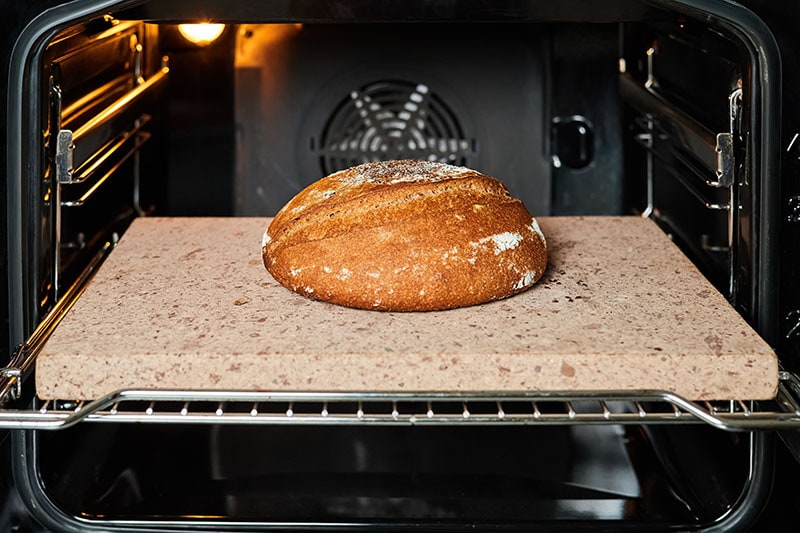
Ceramic Pizza Stone
Most people agree that a ceramic pizza stone is the best option. It is affordable and has good thermal conductivity. The ceramic pizza stone heats evenly, allowing your pizza to bake equally on all sides.
Since it is constructed of terracotta, a ceramic pizza stone is not shockproof. It also has increased risks of breaking or shattering when cooling down.
Therefore, you should take caution while using it to prevent breakage. If you maintain your ceramic pizza stone correctly, it may last many years.
Cordierite Pizza Stone
Do you want a long-lasting pizza stone? The cordierite pizza stone is the perfect choice for you. Cordierite is slightly more expensive than other pizza stones, but its longevity is indisputable. Cordierite pizza stones have high heat resistance.
It can resist temperatures up to 2000°F, making it oven-safe. The cordierite also has the unique ability to tolerate rapid temperature changes. You can cool down a cordierite pizza stone directly after taking it out from the oven, and it will not damage at all.
However, I do not advise doing so. Although cordierite does not shatter, thermal stress may shorten its shelf life. You should store it carefully to ensure that it lasts as long as possible.
Steel Pizza Stone
Pizza steels (baking steels) are more heat resistant than the other options. It conducts heat effectively and can retain heat longer than ceramic and cordierite.
Moreover, baking steel is unbreakable and doesn’t need as much care as its stone or ceramic counterparts. Even so, this stool still has flaws. It requires regular seasoning and can get rusty, but most rust stains can be removed with proper detergents.
How To Choose A Best Pizza Stone
The pizza stone has numerous designs with various qualities. Before you buy a pizza stone, you should consider the size, shape, materials, etc.
It will take you forever to pick an ideal one. You can read the factors that determine a good pizza stone below to shorten the process.
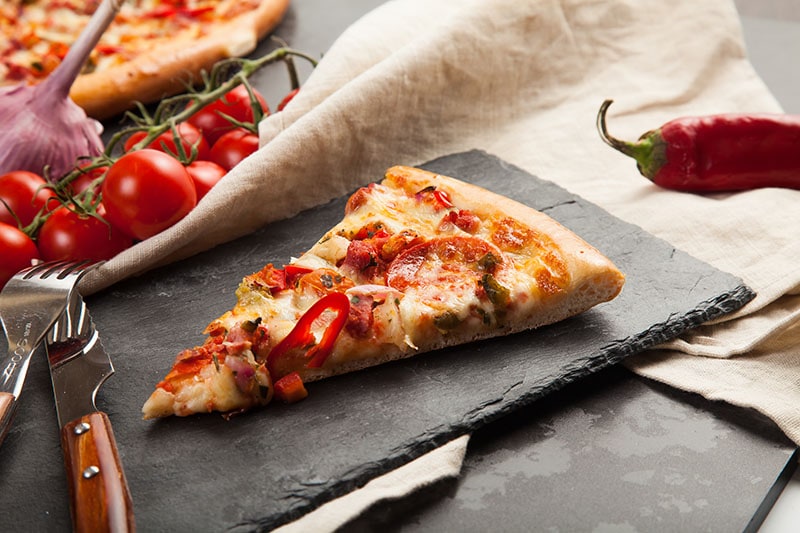
Size
The size of the pizza stone is the most significant consideration when selecting one. You should get a pizza stone whose size is suitable for your oven. A large stone that doesn’t fit well with your oven is a bad investment.
However, an overly small one causes problems for cooking a big batch of pizza. You need a pizza stone that’s large enough to reach all edges of the oven while still being easy to remove. A pizza stone’s diameter typically varies from 10 to 16 inches.
Materials
Cordierite is the best material for pizza stones because of its ability to resist thermal stress and absorb moisture. Ceramics and stone are also good choices, but they will need more care to last longer.
Pizza steels are durable, have good heat conductivity, and can achieve higher temperatures than pizza stones. Anyway, the best material for a pizza stone is up to the customers’ preference.
Shape
Pizza stones come in different shapes, such as rectangles, squares, and circles. Typically, people believe it is better to use a circular pizza stone to match the shape of the pizza. However, a circular pizza stone is not the best choice.
In reality, you should choose the rectangle because of its benefits. Rectangle stones might provide you with extra baking space.
In addition, you can effortlessly turn the pizza in the oven using a rectangular stone. By contrast, you’ll need skills to avoid slipping the pizza out of the round pizza stone.
The Thickness Of Pizza Stone
Before purchasing a pizza stone, you should evaluate its thickness since it impacts the pizza stone’s quality. The greater the thickness of the stone, the better it absorbs and distributes heat.
A pizza stone that is thicker in size will absorb heat more quickly than a thinner one and produce crispier pizzas. In return, it will take more time to preheat and comes with a heavier weight. You should decide whether the tradeoff is worth it or not.
Some pizza stones are less than 0.5 inch thick, but I recommend you buy products with a thickness between 0.5 to 1 inch.
The Tops Pizza Stone You Can Have
There are a lot of pizza stones from different brands in the market. Each product has distinct benefits and downsides. If you are unsure which pizza stones you should pick, you can look at the top products listed below.
Cast Elegance
Cast Elegance pizza stones will bring you a wonderful experience. Cast Elegance Pizza Peel has many benefits.
It can absorb moisture and provide you with a crispy pizza crust. This pizza stone also has high heat retention and sufficient durability. I
Nerd Chef
Nerd Chef is a reliable pizza business. Therefore you can count on them when it comes to the products’ quality. Nerd Chef Baking Steel is an excellent pizza steel with high heat conductivity. It can tolerate temperatures up to 1000℉.
Lodge Cast Iron
Lodge Cast Iron has made cookware since 1896. For more than 125 years, this business has built its reputation around high-quality products. Lodge Cast Iron Pizza Pan is a useful appliance for baking pizza.
You can use it for an oven, grill, or live fire. This pizza pan is naturally nonstick, so it will help a lot when you clean the pizza pan afterward.
FAQs
After finishing this post, I hope you can determine which pizza stones are your best choice. However, you may skim through the questions people frequently ask to learn extra information about pizza stones.
Do You Want A Pizza Stone Now?
A pizza stone is an indispensable appliance for making pizzas. However, whether you get a pizza stone or not is up to you. Assuming you feel the pizza stone is not worth it, you can use other methods to bake pizzas. But I recommend you use it to create the crispiest pizza possible.
What do you think about this post? I always try to bring the most valuable information to you, so I hope the post is worth your time. You can leave any comment to let me know your opinions. Also, don’t forget to like and share this article!
References
- Baking stone (2022) Wikipedia. Wikimedia Foundation.
- Thermal shock (2022) Thermal Shock (Thermal Stress) | Engineering Library.

